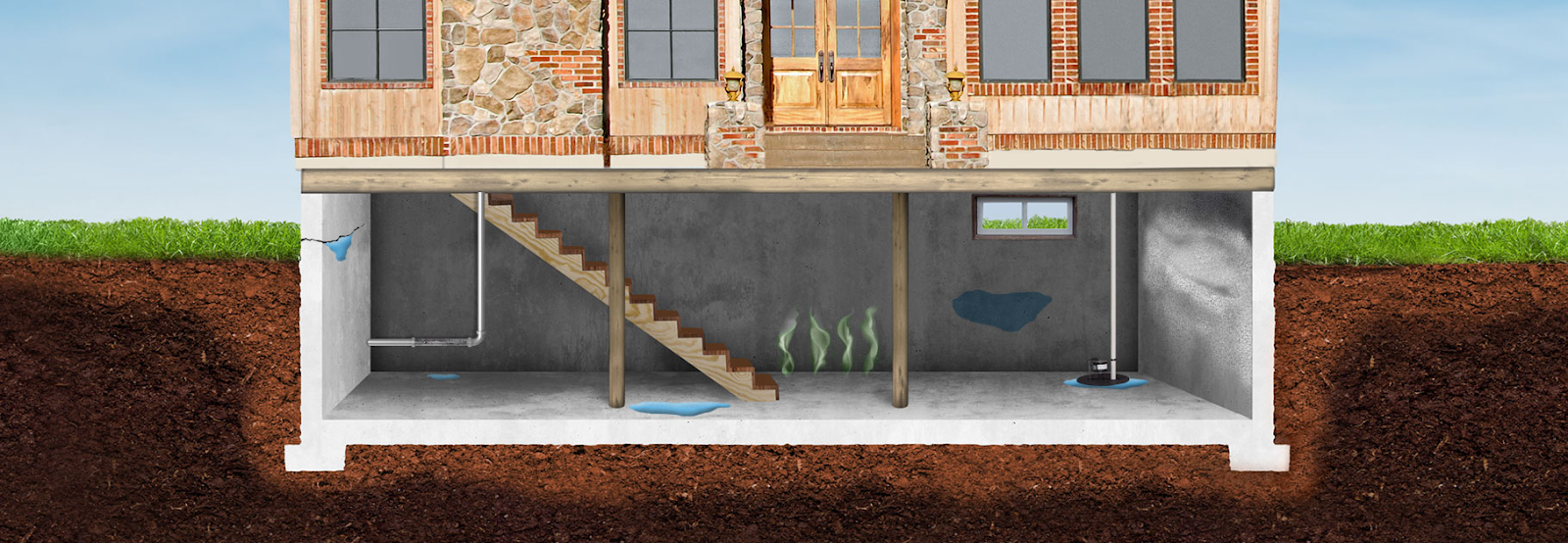Image credit https://moistureloc.com/basement-waterproofing/
Mention damp proofing or waterproofing to homeowners and they instantly think about a big bill and a costly series of work. But there are lots of things you can do to reduce the problem of a damp basement with normal household items – many of which you probably already have.
The problem with basements is that when it is raining or during the autumn and winter, they can get too wet. Combine that with the warmth of being part of a house and a raised humidity level can lead to damp problems. Black mould grows on walls, mildew grows on flooring and everything spreads around the house. The key is to keep the basement free of excessive moisture and stop damp before it starts. See also this DIY Basement waterproofing article from Tapco HomeDry.
Fix any leaks
Before taking any steps to handle a damp basement, you need to figure out the cause. One of the chief causes can be small leaks in the pipes that often run through them. We don’t realise there is a leak until there’s a substantial amount of water and a damp problem. So a regular inspection to check pipes for signs of leaks should be something that you do.
Also, look for leaks outside that could be causing problems for the basement. Examples could be leaking guttering, a downpipe that isn’t sending water to the drains properly or even ground levels that direct water back towards the house, not away from it.
Clean up the basement
With the cause of the problem under control, you can move onto the next issue – cleaning up and drying out the basement. This is key to long term success because you are getting rid of the water but also any nastiness like black mould as well.
While you are sweeping up and cleaning away the moisture, look for cracks in the walls or holes. These will need to be filled before you start dealing with the overall damp problem or they could be a weak spot that water could use to get in.
Use a gravel layer
If you don’t plan to use the basement much or as a storage area, then one way to help handle the water that might seep into it is with a layer of gravel. By choosing a rock that is absorbent, the gravel can take up the water and then you can simply swap it with some fresh, dry gravel to start the process again.
Thin socks with coal
Coal is another great absorbent material and a simple way to make the most of it is to hang a couple of pieces in a thin sock and hang them in the basement. This will absorb the water in the air as well as clearing away that musty smell which comes when there is water sitting around indoors.
Use rock salt
A final household item that can help to reduce moisture is rock salt. This has a strong dehumidifying effect which is why it is used to dry out ice and snow on the streets. You can also use a thin layer of it in the basement to absorb some of the water, dry it out and get it ready for waterproofing.
Applying the waterproofing
Once you have dried out the basement and ensured that the cause has been handled, you can look at waterproofing it. There are a few options for this including a simple coating that is added to walls and floors and creates a barrier that stops the water. A damp proof expert will be able to give you ideas about what’s the best option depending on the cause of the problem and you could even end up with a basement that is a comfortable, useable space.



